⭐ BEST FERRY via CEBU & Countryside Tour: Our pick for Ferry Tickets and Countryside Tours.
Spelunking Adventures in Bohol: Exploring the Enchanting Depths

Unveiling Bohol's Subterranean Wonders: A Spelunker's Paradise
Welcome to Bohol Island, a captivating destination known for its vast karst formations and an abundance of caves waiting to be explored. Nestled in the heart of the Philippines, this island paradise is a haven for spelunking enthusiasts and nature lovers alike. With over 1,400 discovered caves scattered throughout the island, Bohol has rightfully earned its reputation as a spelunking haven, derived from the word "buho," meaning "hole," which often springs forth with water.
Ready to explore the beautiful islands of Cebu and Bohol? Secure your ferry tickets today through 12go and start your unforgettable journey!
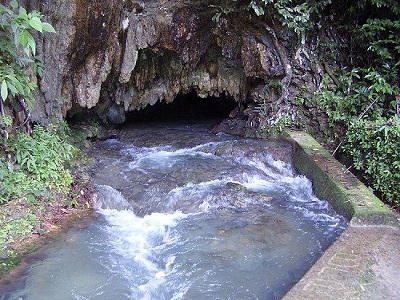

A World Beneath the Surface: Diverse Cave Types Await
As you embark on your spelunking adventure, you'll encounter a diverse array of cave types, each with its unique spelunking characteristics. The southwestern and northwestern regions of Bohol boast spelunking caves formed from Pliocene limestone. These caves tend to be narrow, long, and wet, with winding passages and hidden chambers waiting to be discovered through the thrilling activity of spelunking. On the other hand, the southeastern part of the island features larger, deeper, and drier caves made of Miocene limestone, providing a completely different spelunking experience.
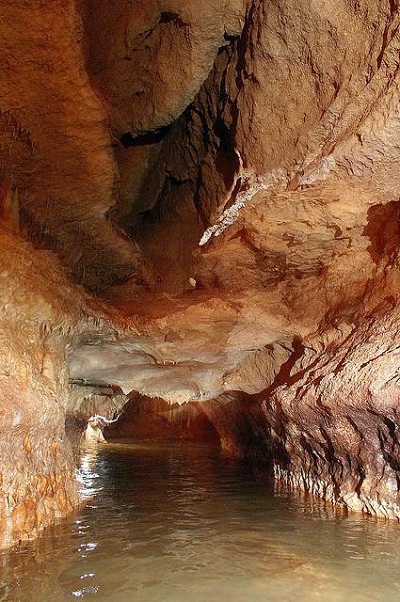


Marvels of Nature: Stalagmites and Stalactites that Astound
Discovering the caves of Bohol unveils a hidden underground world of astonishing spelunking beauty. Prepare to be awestruck by the mesmerizing stone formations known as stalagmites and stalactites, which have formed over thousands of years as water drips from the cave ceilings or seeps through cracks in the rocks, creating the perfect spelunking playground. These formations create a surreal landscape that seems like it belongs in another realm, a realm where spelunking dreams come true. Tranquil ponds scattered throughout the caves add to the enchantment, inviting spelunkers to take a refreshing dip after an exhilarating spelunking adventure.

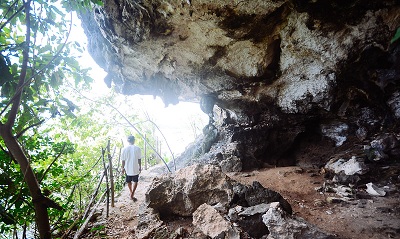
Creatures of the Dark: Albino Crabs and Bats Add Mystique
As you venture deeper into the darkness, you might encounter fascinating albino crabs and other peculiar invertebrates that have adapted and evolved in their dark, subterranean habitat, a spelunking world filled with wonders. These unique creatures are a testament to the resilience and adaptability of life in extreme environments, providing spelunkers with a glimpse into the hidden biodiversity of the spelunking underground. Bats, the common inhabitants of these caves, add an air of mystique to the surroundings as they flit and soar through the cavernous chambers, their presence enhancing the thrill of spelunking exploration.


Safety First: Navigating the Challenges of Cave Exploration
While some caves are easily accessible, others require spelunking equipment and expertise to enter. It's important to note that certain caves can become dangerous during heavy rains, as water levels inside may rise rapidly, adding an extra spelunking challenge. For first-time spelunkers, seeking guidance and orientation from local cavers is highly recommended to ensure a safe and enjoyable spelunking experience. These experienced spelunking guides possess the knowledge and skills to navigate the caves effectively, making your spelunking exploration not only safe but also educational and exhilarating.


Equipped for Adventure: Essential Gear for Every Caver
Each spelunking journey calls for specialized spelunking equipment, including lighting systems to illuminate the darkness, ropes and slings for traversing challenging terrains, carabiners for secure anchoring, and other technical spelunking gear, depending on the specific cave you're exploring. It's crucial to be well-prepared and equipped before venturing into the depths of these natural wonders, as spelunking requires careful planning and attention to detail.
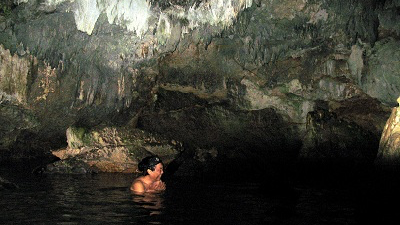

Respecting Local Beliefs: Honoring the Customs of Bohol's Communities
Although spelunking is a relatively new sport in the Philippines, it can sometimes be met with suspicion due to superstitions associated with caves. Some locals, including town officials and residents, may harbor beliefs that spelunkers are seeking hidden treasures within these underground realms. Therefore, it's important to respect the customs and traditions of the communities you visit, fostering mutual understanding and appreciation for their cultural heritage while indulging in the thrill of spelunking.
Now, let's embark on a spelunking
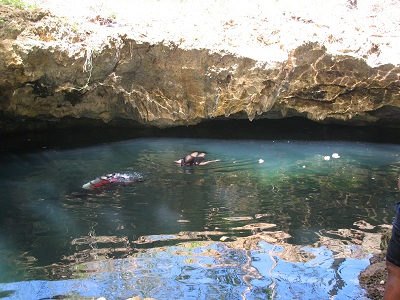
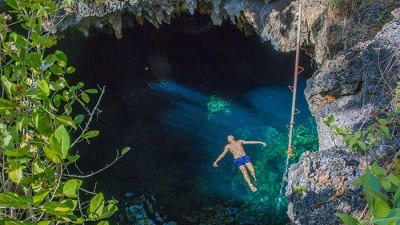
Summary and Overview of Bohol Spelunking Sites
- Hinagdanan Cave: Located in Dauis, Bohol, Hinagdanan Cave is a naturally lit cavern with a deep lagoon and impressive stalactites and stalagmites.
- Francisco Dagohoy Cave, located in Danao Town, was the headquarters of Francisco Dagohoy during his rebellion against Spanish colonization in the 1700s. The cave features crystal-studded chambers and an underwater route that Dagohoy used to evade the Spaniards. It holds historical significance as a symbol of resistance and offers a glimpse into the courageous history of the region.
- Danao Adventure Park Caves: Danao Adventure Park offers caving experiences with different cave systems to explore, including Crystal Cave, Odloman Cave, and Suislide Cave. These caves feature unique formations and challenges for adventurous visitors.
- Sagbayan Peak Cave: Sagbayan Peak is known for its caving experience, offering visitors the chance to explore a cave system with stalactites, stalagmites, underground streams, and pools.
- Anda Caves: Located in Anda, Bohol, this cave complex consists of several interconnected caves, including Combento Cave and Cabagnow Cave. These caves are known for their stunning rock formations and underground pools.
- Balay sa Agta Cave: Situated in Dimiao, Bohol, Balay sa Agta Cave is a limestone cave named after the mythical creature "agta" or fire giant. It features fascinating rock formations and is believed to be the dwelling place of the agta.
- Pahangog Twin Falls and Caves: Located in Getafe, Bohol, Pahangog Twin Falls is complemented by two caves, Panaghoyan Cave and Malingin Cave. These caves provide opportunities for exploration alongside the beautiful waterfall.
- Talisay Beach Caves: Found in Panglao Island, the Talisay Beach Caves offer a unique caving experience with limestone formations and hidden chambers. It's recommended to explore these caves during low tide.
- Mag-Aso Falls and Cave: Mag-Aso Falls in Antequera features a small cave system that visitors can explore while enjoying the beautiful cascades of the falls.
- Kamira Cave: Located in Danao, this cave is declared safe for exploration by the Department of Environment and Natural Resources (DENR). Ropes are allowed for maneuvering in and out of the cave, but ladders are prohibited. The area is a sanctuary protected by the municipality.
- Buhong Tiawan Cave: Situated in Antequera, this cave is reached through dense vegetation. It served as a hideout during the Japanese occupation and is currently home to birds and bats. The entrance leads to a cavern with various types of dripstones.
- Hagakgak Cave: Also located in Antequera, this cave can be accessed through a dense trail and a wide entrance at the base of a sinkhole. The cave can be muddy and wet at times and features narrow passages leading to a cavern with majestic stalagmites and stalactites. Albino crabs and fish inhabit the dark habitat.
- Inambacan Cave: Found in Antequera, this cave is more accessible than Hagakgak and Buhong Tiawan caves. It has a special feature of a cavern with small stalactites and stalagmites submerged in flowing water. Local guides are necessary for spelunking in the area.
- Antequera Cave: Located in Antequera town, this cave is known as the "snake pit" due to the presence of pythons. The cave has a summit pit covered with ferns and is home to snakes that feed on rats from nearby fields.
- Carmaloan Cave: Situated in Jagna town, this cave is considered one of the deepest caves in Central Visayas, reaching a depth of 149 meters. An overnight stay is recommended for thorough exploration.
- Sudlon Cave: Found in Alicia town, Sudlon Cave is the largest cave in Bohol with a 50-meter wide entrance. It serves as a habitat for a large population of bats. The cave features Miocene limestone surrounding a Creataceous andesite intrusion.
- Seventh Heaven Caves: Located in Garcia Hernandez town, these caves can be found at Garcia Hernandez Park along the southern coast of Bohol.
- Anda Burial Caves: In the town of Anda, there are several primitive burial caves in Candabong, Bacong, Virgen, Casica, and Talisay.
- Guindulman Burial Caves: In Basdio, Guindulman, there are cave-burial sites in cliffs, although most are steep and difficult to enter. Some have been ransacked by grave robbers, while others are accessible and contain scattered human remains.
- Batuan Caves: Located in Batuan town, these caves require trekking over rugged terrain. They feature subterranean waterfalls that create vibrations on the surface. Overnight camping may be necessary for thorough exploration.
- Baliho and Lahug Caves: Situated in Danao town, these caves are characterized by their location among jagged cliffs. Baliho Cave has small stalactites, while Lahug Cave has a drop to deep spring water. Climbing out of Lahug Cave requires strength and stamina due to the high opening and swinging ropes.
- Batungay Cave: Found in Trinidad town, Batungay Cave is believed to be inhabited by a mysterious creature called "hiwaga." Although no evidence of the creature has been found, there are reports of unique animal sounds. The cave is easy to navigate and not completely dark.
- Guimba Cave: Located in Loboc town, Guimba Cave served as a hideout during the Japanese invasion. Local legends suggest hidden treasures inside, but the cave is feared due to the creatures that allegedly reside there. Crossing a river by canoe and climbing a steep mountainside are required to access the cave.
- Tigdao Spring/Cave: Found in Anda town, this cave features a karst limestone cavern with fresh spring water near the rim. Spelunkers have explored the cave and found no major tunnels. Tigdao Spring resembles a big natural well.
- Kabagno Spring/Cave: Also in Anda, this cave has a square opening surrounded by jagged cliffs. It has a 3.5-meter drop to the deep spring water below. The cave is spacious with stalactites, but climbing out can be challenging due to the lack of handholds.
- Banilad Spring/Cave: Once a religious pilgrimage site in Anda, this cave has a constricted tunnel inside. Stone steps lead to the cave opening, and the nearby ruins are covered by vegetation.
- Kalorenzo Spring/Cave: Located in Anda, this karst cave has a wide opening and a spring water pool. The cavern is spacious with typical stalactite and stalagmite formations. Access to a tunnel is restricted due to unstable karst formations.
- Kalooy Cave: Situated in Cortes Town, this cave features deep chambers, rock formations, and stalactites. Water can be present on the cave floor during rainy days.
- Kokok & Nueva Vida Sur Caves: Found in Carmen Town, these caves have giant chambers and various rock formations, including stalactites and stalagmites.
- Eva Cave: Located in Jagna Town, this cave experienced significant expansion after an earthquake. It has wide compartments and is home to birds that produce edible nests. There is a knee-deep pool of water in one of the compartments.
- Cantuyoc Cave: Also in Jagna Town, this cave has been recognized as the Philippines' second deepest. It reveals underground rivers within its chambers.
- Sierra Bullones Caves: Situated in Sierra Bullones Town, these caves are part of the Rajah Sikatuna Protected Landscape. Local residents and technical experts have mapped the karst limestone caves, and trained guides are available for caving trips.
- Maribojoc Cave: Located near Punta Cruz Watchtower in Maribojoc, this cave is often used by boy scouts during camping. It has an exit on the other side of a hill.
- Lagtangon Cave: Found in Maribojoc Town, this cave has a small opening from which visitors can fetch cool spring water. Echoes occur when shouting through the opening, indicating a wide cavern inside.
- Macavan Cave: Situated in Inabanga, this cave is located on the northern coast of Bohol, but further information about the cave is not provided.
These spelunking sites offer unique natural formations, water features, and varying levels of difficulty, providing exciting opportunities to explore Bohol's subterranean wonders.
Source:
www.divescotty.com
www.jagna.gov.ph
Ready to explore the beautiful islands of Cebu and Bohol? Secure your ferry tickets today through 12go and start your unforgettable journey!
recommended hotel booking
Book your stay in Bohol's breathtaking surroundings through Agoda and experience the ultimate relaxation
Top 25 Sights and Attractions in Bohol
- Chocolate Hills
- Tarsier Conservation Sanctuary
- Panglao Island
- Loboc River Cruise
- Hinagdanan Cave
- Balicasag Island
- Alona Beach
- Bilar Man-made Forest
- Blood Compact Shrine
- Baclayon Church
- Bohol Bee Farm
- Anda Beach
- Sipatan Twin Hanging Bridge Loboc
- Danao Adventure Park
- Sagbayan Peak
- Butterfly Conservation Center
- Clarin Ancestral House
- Dimiao Twin Falls
- Mag-Aso Falls
- Anda White Beach
- Lamanok Island
- Rajah Sikatuna Protected Landscape
- Dauis Church
- Can-umantad Falls
- Punta Cruz Watchtower
All Rights Reserved ©2024. Bohol Philippines Travel Guide
Address: Talibon, Bohol, Philippines